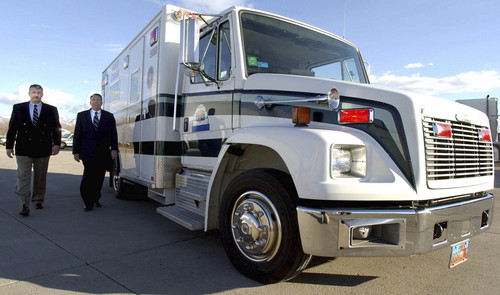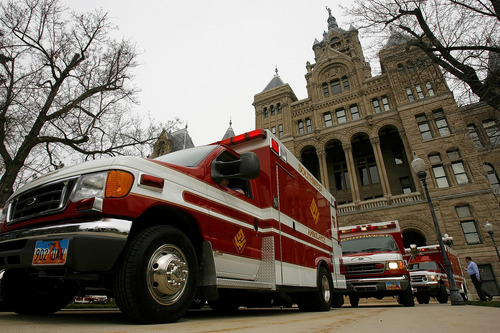This is an archived article that was published on sltrib.com in 2014, and information in the article may be outdated. It is provided only for personal research purposes and may not be reprinted.
Myriad Genetics takes in twice as much revenue from Medicare — $54 million in 2012 — as all other laboratories and similar businesses in Utah combined, according to an analysis of federal data.
Other clinical labs, ambulance services and surgical centers accounted for another $25.6 million that year, according to data provided by the U.S. Centers for Medicare and Medicaid. The data do not include hospitals.
The Obama administration cast the disclosure as part of an effort to make the health care system more transparent. Open-government advocates and journalists have been pressing for release of the data for decades; some doctor groups resisted the release.
The Wall Street Journal, which got advance access to the data, built an interactive graphic that displays the Medicare reimbursement by state, specialty or provider. The top 200 medical providers in Utah took in nearly $160 million in 2012, about half going to doctors and half to other kinds of providers.
Myriad Genetics accounted for a third of the Medicare money billed in Utah because it's the largest DNA lab in the country, with tests for hereditary breast, ovarian and colon cancer.
And, said spokesman Ron Rogers, Myriad does all of its tests at its Salt Lake City lab instead of having labs in many states, as other national companies have.
None of the tests that Myriad charges Medicare for costs much: the priciest is $14.07, the data show. But, Rogers explained, genetic sequencing for a single patient can involve hundreds of the tests.
For each patient, for example, the BRCA1 and BRCA1 genetic sequencing tests for breast cancer performed by Myriad cost Medicare $2,767 this year, according to a Securities and Exchange Commission filing this month.
Medicare comprises only about 10 percent of Myriad's revenue, far less than the 30 percent or 40 percent that other companies in the category report.
For many providers, Medicare is a growing part of their business, reflecting the advancing ages of baby boomers.
Intermountain Healthcare's central laboratory in Murray got the second highest amount of Medicare lab work, just more than $2 million.
That's because the central lab does tests such as those for thyroid problems or cholesterol from throughout the chain's 22 hospitals and 185 clinics in Utah, said Jason Burgess, an Intermountain spokesman.
Tests covered by Medicare comprise 30 percent of the lab's business, Burgess said.
It's about the same share for the next two largest Medicare providers after Myriad Genetics: Classic Lifeguard Air Medical and Gold Cross Ambulance.
Classic Lifeguard, which has bases in rural areas throughout the region, carries seriously ill or injured people by helicopter or turbo-prop plane to hospitals and from smaller to larger hospitals.
In 2012, the company got nearly $2.6 million from Medicare, but there was essentially no profit after paying the costs of maintaining five 24-hour bases for those patients, said Tony Henderson, chief executive.
"It's a very needed service … but it barely makes money to fly Medicare patients," Henderson said.
Medicaid pays even less, meaning the air ambulance loses money on those patients — money it makes up from private insurers, he said.
It's the same story at Gold Cross Ambulance, the biggest ambulance company in Utah.
President Mike Moffitt said Medicare patients comprise about a third of its patients, although they are a bigger share in St. George and Washington County.
But the reimbursement covers less than 40 percent, generally, of the cost of providing ambulance services, in part because Medicare won't pay for drugs, he said.
If a patient is having a heart attack, that's $230 in drugs the ambulance crew administers but which Gold Cross can't be reimbursed, Moffitt said.
Central Utah Surgical Center in Provo is one of the larger out-patient surgical centers in the country, said administrator Jill Andrews.
It did more than $1.5 million in Medicare business in 2012 — some of the procedures profitable and some not, Andrews said.
The aging population, she said, is evident in Utah County, where Central Utah did more than 12,000 surgeries last year. Medicare comprised 38 percent of the center's business in 2012, and 40 percent last year.
Twitter: @KristenMoulton —
Find your doctor
To search Medicare's 2012 billings by state, city, specialty and physician names, visit an interactive graphic at the Wall Street Journal.









